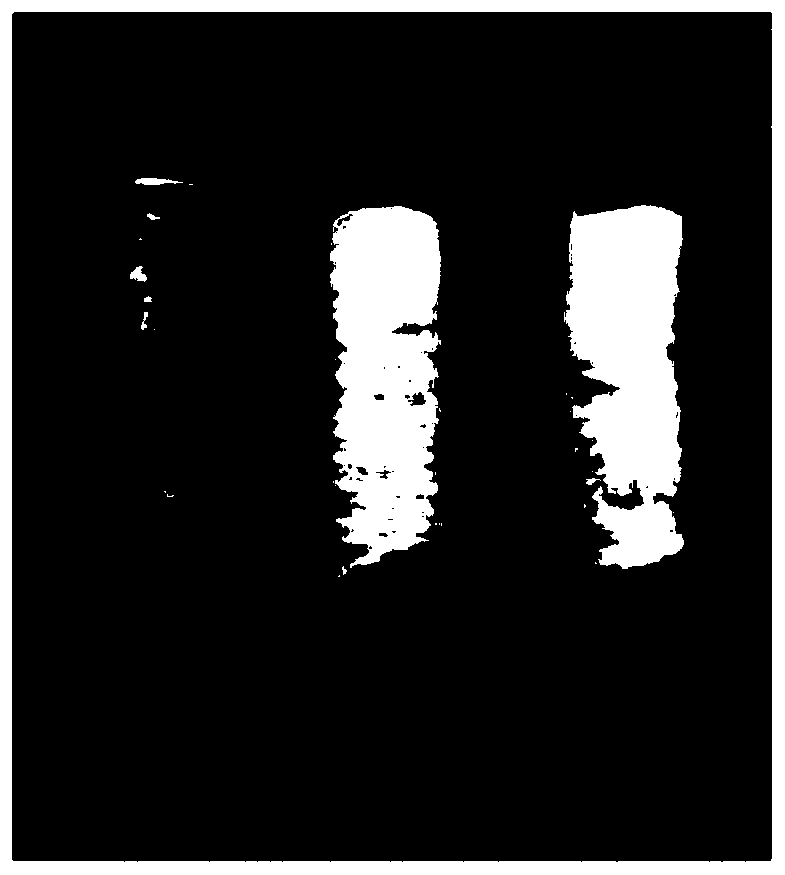Method for preparing rabbit acellular tracheal matrix
A technology of decellularization and rabbit trachea, applied in the field of bioengineering, can solve the problems of unsuitable emergency tracheal graft preparation, long time-consuming and high cost
- Summary
- Abstract
- Description
- Claims
- Application Information
AI Technical Summary
Problems solved by technology
Method used
Image
Examples
Embodiment 1
[0025] 1.1 Selection and grouping of experimental animals
[0026] Select 30 healthy New Zealand rabbits of 2.5-3.5kg, male or female, and randomly divide them into 3 groups. Group A is the original control group, and groups B and C correspond to the modified DEM groups of 2 and 4 cycles.
[0027] 1.2 Preparation of modified DEM decellularized tracheal matrix
[0028] Three groups of New Zealand rabbits were sacrificed by injecting air into ear margin veins, and the trachea was isolated under the principle of asepsis, and the connective tissue on the outer wall of the trachea was immediately peeled off. Soak the fresh trachea of group A (control group, n=10) in 4°C PBS buffer solution containing 1% antibiotics and antifungal drugs (AA) for testing. The other two groups of fresh trachea were divided into groups B and C.
[0029] First osmotically dissolve in sterile distilled water at 4°C for 48h, then enter the first decellularization cycle: soak in 4% w / v (g / ml) sodium de...
Embodiment 2
[0030] Embodiment 2 effect verification
[0031] method:
[0032] 1. Macroscopic measurement and biomechanical testing
[0033] Observe the general shape of the tracheal matrix of each group under direct vision, such as whether there is a defect or collapse; measure the length, thickness and width of the middle part of the trachea of each group of samples, and test the anti-pressure properties of each group of samples with a universal mechanical testing machine. The fixed pressure plate sensor of the universal testing machine is used to fix the sample in the center of the disc, the initial load pressure is 0.1N, and the constant compression is started at a rate of 5mm / min at room temperature, and the time when the pipe diameter is compressed to 50% is recorded. Strain pressure, elastic modulus value, and recovery of deformation after compression.
[0034] 2. Routine histological staining analysis
[0035] The samples of each group were immersed in 10% neutral formaldehyde...
PUM
 Login to View More
Login to View More Abstract
Description
Claims
Application Information
 Login to View More
Login to View More - R&D
- Intellectual Property
- Life Sciences
- Materials
- Tech Scout
- Unparalleled Data Quality
- Higher Quality Content
- 60% Fewer Hallucinations
Browse by: Latest US Patents, China's latest patents, Technical Efficacy Thesaurus, Application Domain, Technology Topic, Popular Technical Reports.
© 2025 PatSnap. All rights reserved.Legal|Privacy policy|Modern Slavery Act Transparency Statement|Sitemap|About US| Contact US: help@patsnap.com



